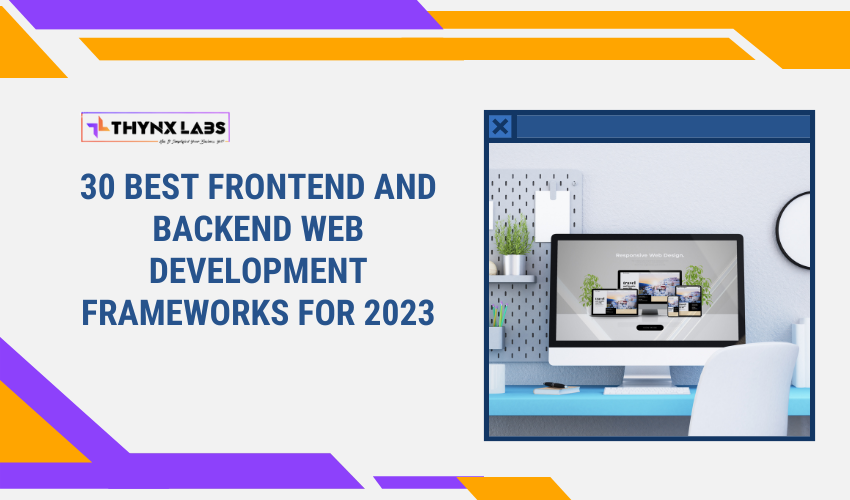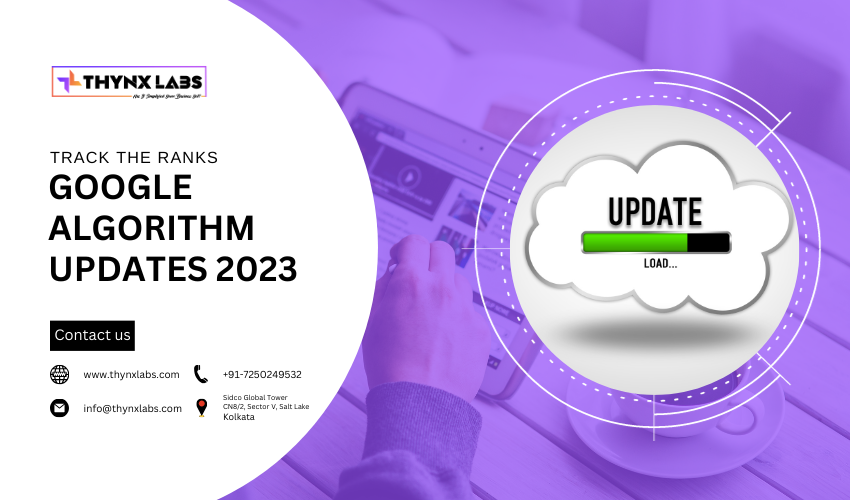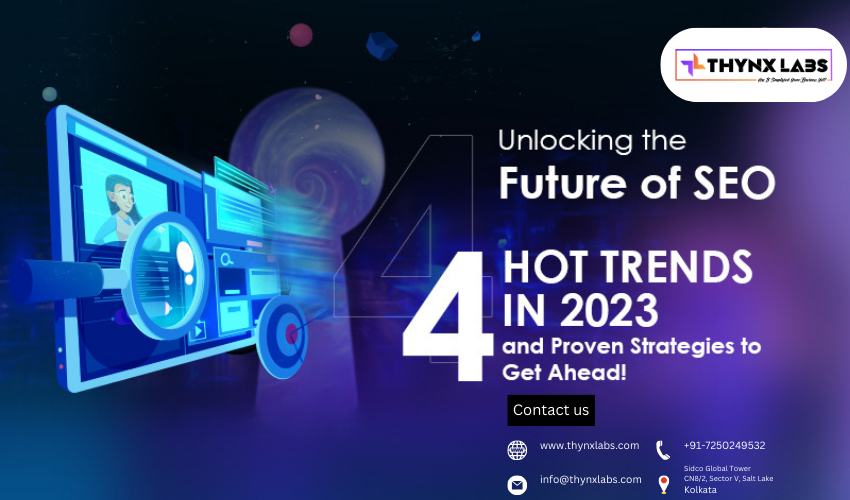29 LATEST WEB DEVELOPMENT TRENDS TO FOLLOW IN 2023
The world of web development is constantly evolving, and keeping up with the latest trends and technologies can be a challenge. In 2023, we can expect to see several exciting developments in web development. Here are 31 latest web development trends to follow in 2023:
- Progressive Web Apps (PWAs): PWAs are web apps that behave like native mobile apps. They offer a seamless user experience and are designed to work across all devices and platforms. PWAs are fast, reliable, and easy to install, making them an excellent choice for businesses looking to enhance their online presence.
- Voice User Interfaces (VUIs): As voice assistants like Amazon Alexa and Google Home become more popular, we can expect to see an increasing number of websites and apps incorporating voice user interfaces. VUIs allow users to interact with a website or app using natural language commands, making the experience more intuitive and user-friendly.
- Augmented Reality (AR): AR technology allows developers to create immersive experiences that blend the virtual and physical worlds. In 2023, we can expect to see more websites and apps incorporating AR to create engaging and interactive experiences for users.
- Chatbots and AI: Chatbots and AI-powered virtual assistants are becoming increasingly popular in the world of web development. They can help businesses automate customer service and provide personalized experiences for users.
- Responsive Design: Responsive design has been a trend for several years now, but it continues to be important in 2023. With more people accessing the internet on mobile devices, it's essential to ensure that websites are designed to be mobile-friendly and accessible on all screen sizes.
- Single Page Applications (SPAs:) SPAs are becoming increasingly popular, thanks to their fast and responsive user experience. With SPAs, all the necessary code is loaded on the initial page load, allowing for faster load times and better performance.
- Motion Design: Motion design involves adding animated elements to websites and apps, making the experience more engaging and interactive for users. In 2023, we can expect to see more websites and apps incorporating motion design to create a more immersive user experience.
- Dark Mode: Dark mode has become increasingly popular over the past few years, and it's likely to continue to be a trend in 2023. The dark mode is easier on the eyes and can help to reduce eye strain, making it a popular choice for many users.
- Microinteractions: Microinteractions are small animations or interactions that occur within a website or app, making the experience more engaging and interactive for users. In 2023, we can expect to see more websites and apps incorporating micro-interactions to create a more engaging user experience.
- Cybersecurity: As cyber threats continue to evolve, cybersecurity is becoming increasingly important in web development. Developers need to ensure that websites and apps are designed with security in mind, to protect user data and prevent cyber attacks.
- Artificial Intelligence (AI): AI is becoming increasingly important in web development, with many businesses using AI-powered tools to automate tasks and provide personalized experiences for users.
- Blockchain: Blockchain technology is being used to create secure and transparent transactions online, making it a popular choice for businesses in industries such as finance and healthcare.
- 3D Design:3D design is becoming increasingly popular in web development, allowing developers to create more immersive and engaging experiences for users.
- Interactive Storytelling: Interactive storytelling involves creating a narrative that allows users to engage with the story and make choices that affect the outcome. In 2023, we can expect to see more websites and apps incorporating interactive storytelling to create a more engaging user experience.
- Mobile Optimization: As more people access the internet on mobile devices, it's essential to ensure that websites and apps are optimized for mobile
- WebAssembly (Wasm): WebAssembly is a low-level bytecode format that allows developers to write high-performance code that runs in a web browser. In 2023, we can expect to see more websites and apps using Wasm to improve performance and deliver more complex applications to users.
- Headless CMS: Headless CMS is a content management system that separates the content management backend from the frontend, allowing developers to build customized frontends that can be used on multiple devices and platforms.
- GraphQL: GraphQL is a query language that allows developers to retrieve only the data they need from an API, improving performance and reducing unnecessary data transfer. In 2023, we can expect to see more websites and apps using GraphQL to streamline data retrieval and improve performance.
- Low-Code Development: Low-code development platforms allow developers to create applications quickly and easily using visual drag-and-drop interfaces and pre-built components. In 2023, we can expect to see more businesses adopting low-code development platforms to speed up their development processes and reduce costs.
- Serverless Architecture: Serverless architecture involves running applications without the need for dedicated servers, allowing developers to focus on building applications rather than managing infrastructure. In 2023, we can expect to see more websites and apps using serverless architecture to improve scalability and reduce costs.
- Web Components: Web Components are a set of APIs that allow developers to create reusable custom elements for web pages and applications. In 2023, we can expect to see more websites and apps using Web Components to improve code reusability and reduce development time.
- Cybersecurity Auditing: Cybersecurity auditing involves analyzing a website or app's code and infrastructure to identify potential vulnerabilities and weaknesses. In 2023, we can expect to see more businesses conducting regular cybersecurity audits to ensure their websites and apps are secure and protected from cyber-attacks.
- Personalization: Personalization involves tailoring the user experience based on a user's preferences and behaviors. In 2023, we can expect to see more websites and apps using personalization to provide a more engaging and relevant experience for users.
- Real-Time Web Applications: Real-time web applications allow for instant data transfer and updates between users and servers, providing a more dynamic and engaging user experience. In 2023, we can expect to see more websites and apps incorporating real-time functionality to improve user engagement and collaboration.
- Natural Language Processing (NLP): NLP involves using AI to analyze and understand natural language inputs from users. In 2023, we can expect to see more websites and apps using NLP to improve the user experience and provide more intuitive interfaces.
- Single Sign-On (SSO): SSO allows users to log in to multiple applications and websites using a single set of credentials, improving convenience and security. In 2023, we can expect to see more websites and apps using SSO to improve the user experience and reduce the need for multiple logins.
- Microservices Architecture: Microservices architecture involves breaking an application down into smaller, independent services that can be deployed and scaled separately. In 2023, we can expect to see more websites and apps using microservices architecture to improve scalability and reduce complexity.
- Cloud Computing: Cloud computing involves storing and accessing data and applications over the internet, rather than on local servers. In 2023, we can expect to see more websites and apps using cloud computing to improve scalability and reduce infrastructure costs.
- User Experience Design (UX): UX design involves creating a user-centered design that is intuitive, engaging, and easy to use. In 2023, we can expect to see more websites and apps prioritizing UX design to improve the user experience and drive user engagement
Conclusion
In conclusion, web development is constantly evolving, and it's important for developers and businesses to stay up to date with the latest trends and technologies. In 2023, we can expect to see more websites and apps using AI, blockchain, and other emerging technologies to improve performance, security, and user experience. Additionally, we can expect to see more focus on UX design, accessibility, and cybersecurity auditing to ensure that websites and apps are engaging, user-friendly, and secure. By staying ahead of the latest web development trends, developers and businesses can create innovative and successful web applications that meet the needs and expectations of their users.


